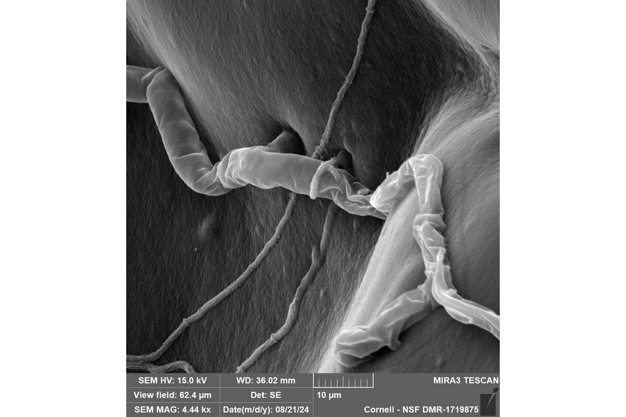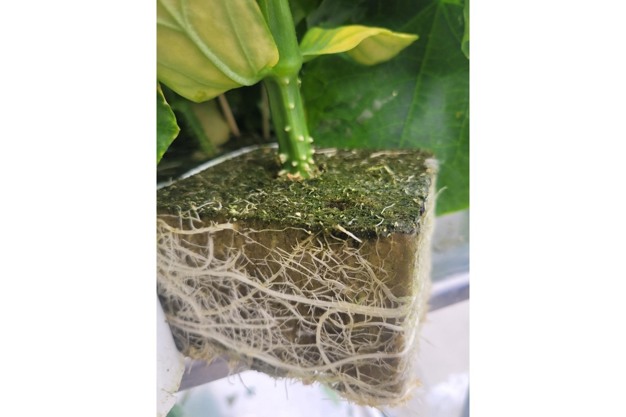"Fusarium poses one of the most significant challenges to greenhouse vegetable growers in Ontario and British Columbia. In Leamington alone, more than 400 acres of peppers have been pulled out this year, due to Fusarium. Three months of production were lost, which is a major economic blow for growers," says Michael Brownbridge, Sr. Technical Services Manager at BioWorks. He explains that the disease is persistent, with its spores present in soil, water, and air, making prevention the only viable solution. At the Canadian Greenhouse Conference, Michael gave the presentation 'Can We All Just Get Along? Said the Microbe to the Molecule', in which he focused on the integration of microbial biofungicides, biostimulants, and conventional disease management tools to tackle the persistent threat of Fusarium.
Trichoderma T22 parasitizing Rhizoctonia
The role of biological tools in root health management
Microbial biofungicides, such as those based on Trichoderma species, have emerged as critical tools in combating Fusarium, Michael explains. "These beneficial microbes work by colonizing plant roots, outcompeting pathogens for resources, and producing metabolites that inhibit disease development. Additionally, they stimulate the plant's natural defense mechanisms, priming it to better resist infection and tolerate environmental stresses."
Michael highlights the multifaceted benefits of using biofungicides. "They protect roots, enhance nutrient uptake, and improve root hair growth, which is crucial for water and nutrient absorption," he explains. "This leads to healthier, more productive plants even under stressful, high-temperature conditions."
Combining microbial and conventional strategies
Michael emphasizes the benefits of integrating biologicals with conventional disease management strategies, particularly in systems with high disease pressure. "When used in rotation with conventional products, microbial biofungicides can enhance overall efficacy while reducing reliance on chemical inputs," he says. However, timing and application are crucial for success.
"For example, growers using Trichoderma-based biofungicides must start treatments early in the propagation phase and maintain a consistent regime throughout production. This proactive approach ensures plants are better equipped to resist pathogens before disease pressure intensifies."
BioWorks RootShield on peppers
Opportunities and challenges
Michael notices that the adoption of biofungicides and biostimulants is growing as the industry moves away from a heavy reliance on chemical controls. Yet, challenges remain. "High disease pressure is not the time to start using biologicals," he cautions. "These tools work best as preventive measures and proper application is key to their effectiveness."
He adds that educational resources and support from companies like BioWorks are essential to help growers implement these programs successfully. "We provide detailed protocols and work closely with growers to tailor solutions to meet their specific needs," Michael says. "It's about translating research into practical applications that growers can integrate into their systems."
An integrated approach
As Fusarium continues to challenge growers, Michael underscores the importance of an integrated approach. "IPM isn't about choosing between chemistry and biology—it's about using every tool available to protect crops and maximize productivity," he concludes.
 For more information:
For more information:
BioWorks
[email protected]
bioworksinc.com
